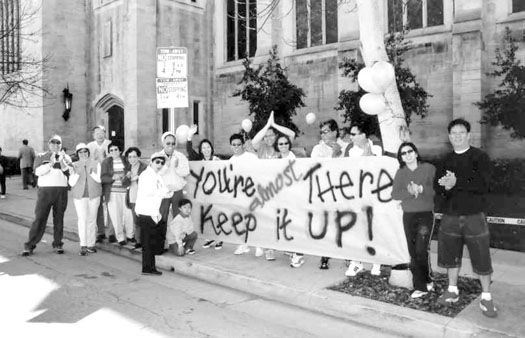Ann Mulligan is a registered nurse with a background in oncology and public health. She has a passion for holistic medicine and a dream for her parish rooted in the years she was a student at Mount Saint Mary’s dealing with a persistent case of psoriasis.
During that time, she became convinced that the body would function better, and in some cases heal itself completely, if treated holistically as mind, body and soul, nurtured through sound nutrition and care. When she moved into private practice as a natural health consultant, she followed the work of physicians Mark Hyman and Daniel Amen, who eventually teamed up with Pastor Rick Warren of Saddleback Church to create the Daniel Plan, a way of living that combines faith with healthy eating.
Mulligan, an active member of Padre Serra Parish in Camarillo, was excited about the Daniel Plan. She fully believed that her own experience with natural healing in her young adult years led to a greater potential of gratitude for all that God has given her.
Her dream was to share her ideas and experience as well as knowledge of the Daniel Plan diet with the parish, where she saw many people who were overweight and/or struggling with diabetes, asthma and other ailments that might be remedied through a different way of eating and living.
However, she never quite knew how to broach the subject with her pastor. One Sunday as she was leaving the church with her husband, it just so happened that the pastor was standing on the church steps alone, and she felt compelled to share her dream with him.
To her amazement and delight, the pastor embraced the idea, and within a few weeks Mulligan was working with the parish staff to implement what became six weeks of the Wholiness Plan, the parish’s New Years resolution for 2015.
The plan was adapted from Pastor Rick Warren’s popular 40 day health challenge to reflect a Catholic theme and was advertised as “40 Days to a Healthier and Holier Life.” It claims five fundamentals: faith, friends, food, fortitude and fitness. It is a Scripture-based series that invites parishioners “to become the people God created us to be.”
The Sunday readings, six homilies presented by pastor Father Patrick Mullen on each of the fundamentals, a video and a daily journal were the tools used by groups who signed up for the plan. The groups were referred to as “Connect groups.”
Teresa Runyon, faith life minister at the parish, helped roll out the Wholiness Plan that began in mid-January and ended just before Ash Wednesday, giving those who were involved the opportunity to carry their new practices over into Lent. Initially, Runyon says, she just hoped the plan would attract enough people to make it viable.
The response far exceeded her expectations, with nearly 300 participants in 50 small groups working together to study Scripture, eat healthy food, exercise and support each other in the process. Because six weeks at the beginning of the year were given over to this plan and it was addressed in the weekly homily, it’s likely that there were even more people who adopted some of the practices on their own.
The parish provided opportunities for Saturday morning hiking excursions, yoga, adapted exercise for seniors and cooking demonstrations that were open to all parishioners, whether or not they had signed up for a Connect group. The effects were widespread throughout the parish community.
Long ago, parishes were often made up of single nationalities as European immigrants settled in the United States. The Irish, Italians, the Polish and Germans, among others, tended to live in close proximity to each other. They brought their particular ways of worship with them and their parishes reflected this.
Parishes were the center of social as well as spiritual life for many communities. Today, while there are many vibrant parishes across the United States, there is a concern that Catholics have moved away from parish involvement except for weekend liturgies and sacramental milestones such as marriage and baptism.
Early in his pontificate, Pope Francis wrote in “The Joy of the Gospel,” “The parish is not an outdated institution; precisely because it possess great flexibility, it can assume quite different contours depending on the openness and missionary creativity of the pastor and the community. It is a community of communities, a sanctuary where the thirsty come to drink in the midst of their journey, and a center of constant missionary outreach.”
This is what happened at Padre Serra parish. One person saw a need, took the risk to ask the questions to address the need and people responded. Not only did participants learn about nutrition, exercise and all that is necessary for a healthy life, they also read and studied Scripture together as they shared the ups and down of their journey to health.

